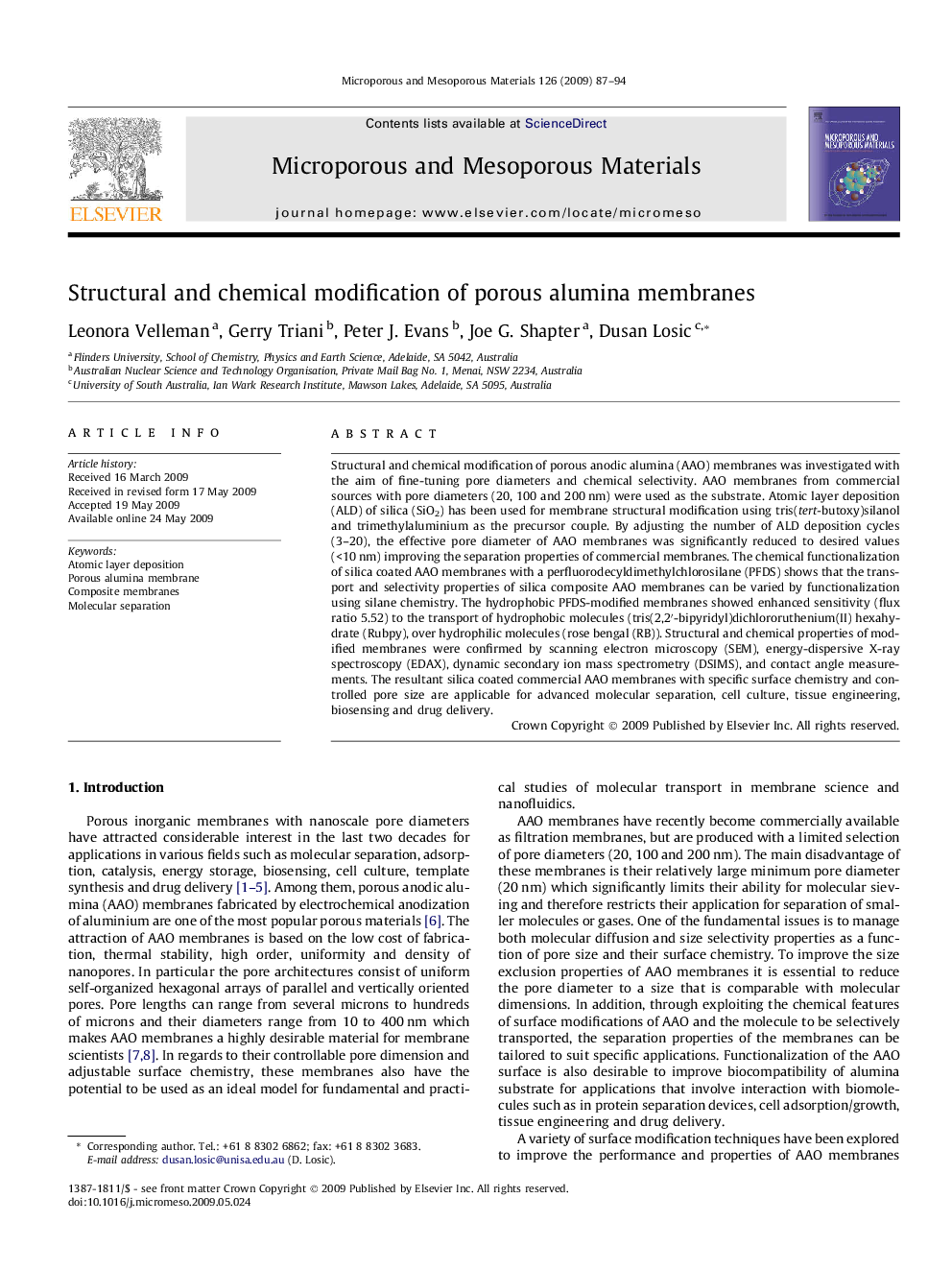| Article ID | Journal | Published Year | Pages | File Type |
|---|---|---|---|---|
| 74514 | Microporous and Mesoporous Materials | 2009 | 8 Pages |
Structural and chemical modification of porous anodic alumina (AAO) membranes was investigated with the aim of fine-tuning pore diameters and chemical selectivity. AAO membranes from commercial sources with pore diameters (20, 100 and 200 nm) were used as the substrate. Atomic layer deposition (ALD) of silica (SiO2) has been used for membrane structural modification using tris(tert-butoxy)silanol and trimethylaluminium as the precursor couple. By adjusting the number of ALD deposition cycles (3–20), the effective pore diameter of AAO membranes was significantly reduced to desired values (<10 nm) improving the separation properties of commercial membranes. The chemical functionalization of silica coated AAO membranes with a perfluorodecyldimethylchlorosilane (PFDS) shows that the transport and selectivity properties of silica composite AAO membranes can be varied by functionalization using silane chemistry. The hydrophobic PFDS-modified membranes showed enhanced sensitivity (flux ratio 5.52) to the transport of hydrophobic molecules (tris(2,2′-bipyridyl)dichlororuthenium(II) hexahydrate (Rubpy), over hydrophilic molecules (rose bengal (RB)). Structural and chemical properties of modified membranes were confirmed by scanning electron microscopy (SEM), energy-dispersive X-ray spectroscopy (EDAX), dynamic secondary ion mass spectrometry (DSIMS), and contact angle measurements. The resultant silica coated commercial AAO membranes with specific surface chemistry and controlled pore size are applicable for advanced molecular separation, cell culture, tissue engineering, biosensing and drug delivery.
